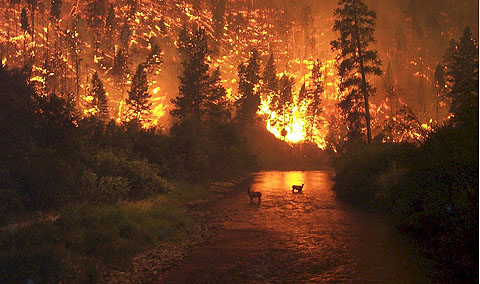Biofuels criticism ignores wider picture
article on 22 August 2007 in www.carbonpositive.net
A scientific study reported widely around the world over the past week concludes that forests are much better than biofuel crops for reducing greenhouse gas emissions and fighting global warming. The authors, British researchers Renton Righelato and Dominick Spracklen, argue that “if your primary concern is reducing carbon dioxide emissions, growing biofuels is not the best way to do it”.
We contend, however, that any debate over the merits of biofuels versus reforestation or any other land use must take into account a lot more than the straight carbon impact – even when climate change is the major concern. There are a host of social and other environmental considerations that just can’t be separated out, just a few of which are outlined below. We also take issue with the cursory treatment in some media reporting of the study that seems
to take its findings as invalidating all production of biofuels.
The study, published in the journal Science, finds that carbon dioxide stored in trees grown in a given area of land will outweigh the avoided emissions generated from the biofuels that could be produced from crops on the same ground. Reforested land will have a positive effect on greenhouse gas emissions two to nine times greater than the same area devoted to biofuel crops, the study concludes.
The two major recommendations based on these findings appear to be that forests shouldn’t be cleared for biofuel crops, and, that already cleared or degraded land should be turned over to reforestation rather than biofuel crops.
On the first point, the study contributes some welcome hard comparative data to the fuzzy area of carbon storage levels in trees and plants. But the question is not ‘should we clear forests for biofuel crops?’. This has already been answered – no. The real question is how do we prevent it happening and ensure that biofuel production is environmentally sustainable, especially in the developing world.
There is little doubt that the rush toward biofuel production has caused some existing forest area to be chopped down to clear the way for ethanol and biodiesel crops. This problem clearly has to be tackled. The UN’s Food and Agriculture Organisation (FAO) chief Jacques Diouf committed just last week to pursuing an international biofuels treaty to ensure that native forests and food crops aren’t the losers in the rise of the industry. Let’s hope
it succeeds.
This leads to the second point over whether producing biofuels is worthwhile at all.
The answer should take into account more than simply comparing the net carbon impact. A wider examination of all the environmental and social factors weighing on the question would have to conclude that whether reforestation or biofuels is the right land use for a particular area will also depend very much on the local conditions and the national setting the land and its people are in. Diouf underlined the FAO’s belief that biofuel production holds great
potential to reduce hunger and poverty in poor countries - if done sustainably and world trade reform is undertaken.
Further, biofuels don’t necessarily come at the expense of forests anyway. Rarely is it a simple ‘either/or’ proposition. Reforested land may be a great carbon store but forests can’t be grown everywhere and they can’t always deliver the same economic benefits as crops can to billions of people in non-industrialised countries relying on the land around them for their livelihood. For example, crops like Jatropha, used for biodiesel,
can thrive on marginal agricultural land where many trees and crops won’t grow, or would produce only slow growth and low yields.
In many developing countries, demand for transport and generator fuel is growing rapidly. It must make sense to meet that growth with biofuels, particularly if, rather than fossil fuels as far as possible within the limits of environmental sustainability. Greenhouse emissions aside, biofuels are also cleaner because they contain fewer pollutant chemicals than fossil fuels.
It’s also worth noting that generating carbon credits from biofuel production for their emissions reduction contribution, which can determine whether a biofuel project is economic or not in the first place, introduces safeguards against deforestation. Under Kyoto’s CDM and under other carbon offset accreditation standards, projects won’t be approved for credits unless it can be proven that there was no destruction of natural environment to make
the land available.
All in all, reforestation and biofuels are both activities with the potential to make a positive contribution to fighting climate change, become sustainable activities on a local environmental level, and provide livelihoods for people with few economic opportunities.
|
